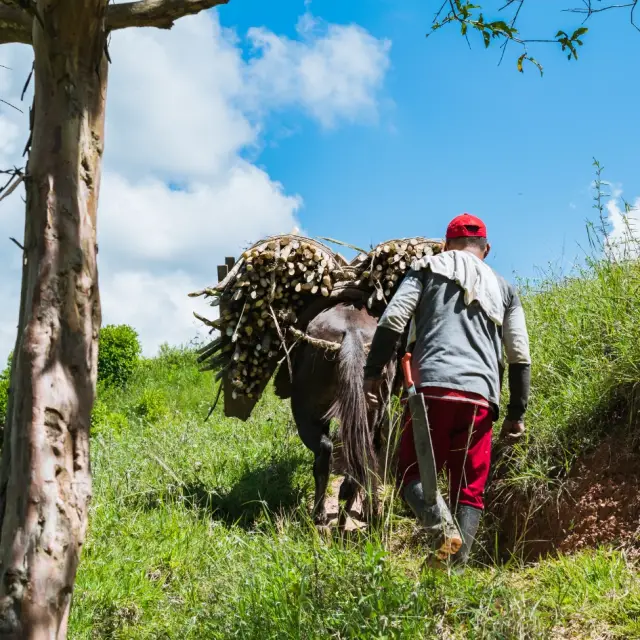Agrarian reform in Colombia has been one of the most debated issues in the country's history, as it is deeply intertwined with issues of land distribution, social inequality and armed conflict. Over the years, different governments have attempted to implement policies to address these issues, but progress has been slow and sometimes controversial. This article examines the history of agrarian reform in Colombia, its importance, current challenges and the most recent initiatives to promote inclusive rural development.
Brief history of agrarian reform in Colombia.
The problem of land distribution in Colombia has its roots in the colonial period, when vast tracts of land were allocated to a few landowners, leaving the majority of the rural population without access to arable land. This inequality intensified during the 20th century, leading to social and political conflicts.
In 1936, during the presidency of Alfonso López Pumarejo, Law 200, known as the “Land Law,” was enacted, seeking to redistribute land and recognize peasant rights. However, its impact was limited due to resistance from landed elites and lack of effective enforcement. Later, in the 1960s, President Carlos Lleras Restrepo attempted to push for agrarian reform through Law 1 of 1961, which created the Colombian Institute of Agrarian Reform (Incora). Although this initiative achieved some progress, it also faced significant obstacles, including violence generated by armed groups and a lack of resources for its implementation.
Importance of agrarian reform.
Agrarian reform is essential to address inequality and promote rural development in Colombia. According to data from the National Administrative Department of Statistics (DANE), approximately 1% of landowners own more than 80% of the country’s productive land, a concentration that is among the highest in the world. This situation not only perpetuates rural poverty, but also fuels social conflicts and hinders peasants’ access to basic resources such as education, health and public services.
Furthermore, agrarian reform is key to ensuring food security, as it allows small farmers to increase their production and improve their income. It can also contribute to environmental conservation through sustainable agricultural practices that reduce deforestation and protect ecosystems.
Current challenges.
Despite its importance, agrarian reform in Colombia faces numerous challenges, including:
Armed conflict: For decades, armed conflict in Colombia has hampered the implementation of agrarian policies. Many rural regions have been affected by violence, leading to the forced displacement of millions of peasants and the concentration of land in the hands of illegal armed actors.
Political resistance: Land reforms often face opposition from powerful groups that benefit from the status quo. This resistance has limited the implementation of laws and programs aimed at redistributing land.
Lack of resources: Implementing agrarian reform requires significant investments in infrastructure, credit, training and technical support for farmers. However, the resources allocated for this purpose have been insufficient.
Legal issues: Lack of clarity in land ownership and conflicts over property rights have hampered efforts to redistribute land equitably.
(Source: El Espectador and Semana )
Recent initiatives.
In recent years, the Colombian government has attempted to address these issues through new policies and programs. The Peace Agreement signed in 2016 between the government and the FARC included a chapter on comprehensive rural reform, which seeks to improve access to land and promote sustainable development in the areas most affected by the conflict.
One of the key measures has been the creation of the Land Fund, which aims to distribute three million hectares to farmers without land or with insufficient land. In addition, property formalization programs have been established to guarantee farmers' rights and avoid legal conflicts.
The government has also promoted initiatives to support small farmers through credit, technical assistance and access to markets. These measures aim to increase productivity and improve living conditions in rural areas.
(Source: UN News and La Silla Vacía )
The role of civil society.
Civil society plays a crucial role in promoting agrarian reform in Colombia. Peasant organizations, social movements and NGOs have worked to raise awareness of the needs of rural communities and pressure the government to implement more inclusive policies.
These organizations have also led community projects that promote sustainable development, education and citizen participation. They have also collaborated with international organizations to ensure that agrarian reform is a priority on the political agenda.
Agrarian reform in Colombia is a complex issue that requires a comprehensive and collaborative approach. Although important progress has been made, much remains to be done to ensure that rural communities have equitable access to land and the opportunities necessary to prosper.
The effective implementation of agrarian reform would not only benefit peasants, but would also contribute to building a more just, peaceful and sustainable country. To achieve this goal, it is essential that the government, civil society and the international community work together to overcome challenges and promote inclusive rural development.
Sources:
